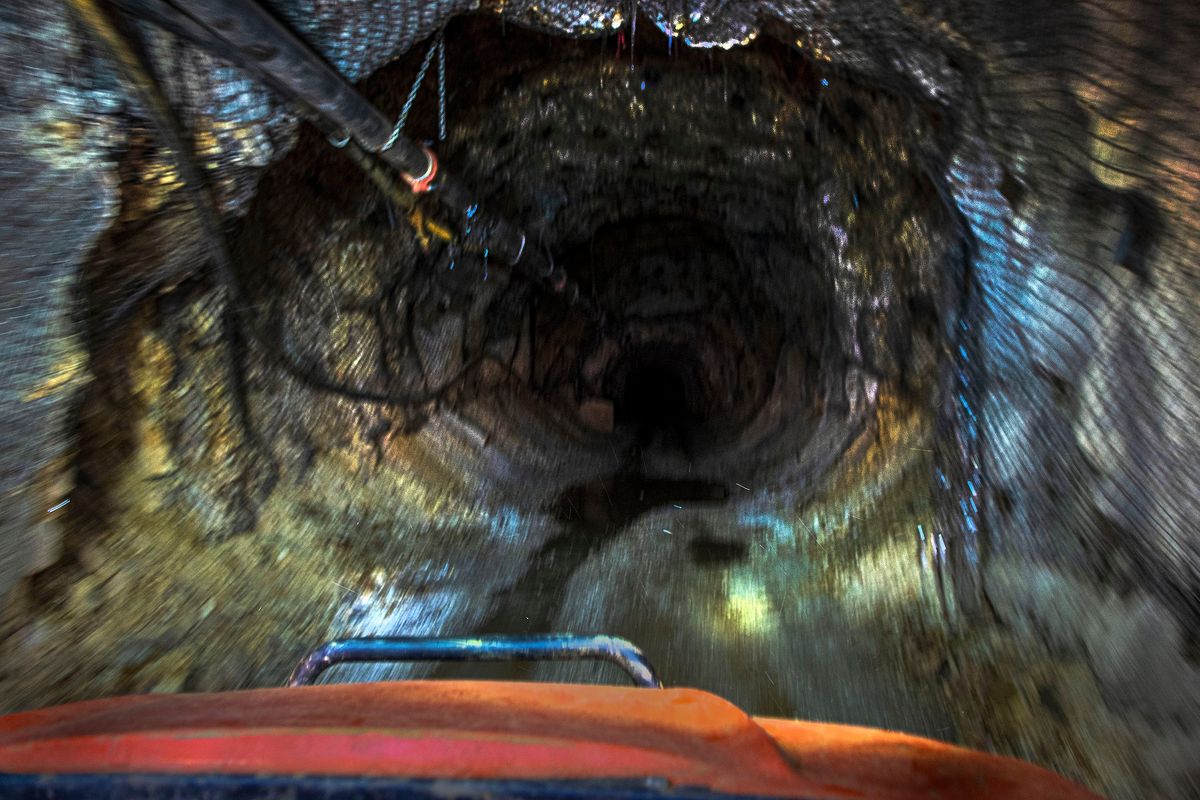Bunker Hill Mine plans to reopen early next year

KELLOGG, Idaho – More than four decades after it closed amid environmental disaster, the Bunker Hill Mine is on track to reopen next year in one of the country’s largest superfund sites, this time with a vision for more responsible mining and stewardship.
“If you come in with the right approach and focus,” Bunker Hill’s CEO Sam Ash told a conference room of investors Thursday, “there is a place for the mining industry to step in to continue to rehabilitate the historical environmental impacts and rehabilitate local communities, while at the same time delivering return to shareholders and critical metals into the U.S. supply chain.”
When it reopens, the mine will create more than 200 full-time jobs. While a fraction of the 2,200 jobs from when it closed in 1981, it is a boon for the Silver Valley, which prides itself on its mining heritage.
A fire in 1973 destroyed the baghouse pollution filter at the mine’s smelter in Smelterville, Idaho. Over the next year, the smelter continued to operate and spewed hundreds of tons of toxic lead into the air, resulting in some of the highest blood lead levels ever recorded in children.
Ten years later, the EPA listed Bunker Hill Mining and Metallurgical Complex on the National Priorities List of superfund sites. Despite the name, the site included other mines in a 21-square mile area that contributed to heavy metal contamination through a century of unregulated mining.
The EPA expanded the boundaries of the superfund site in 2002 to include 1,500 square miles of Coeur d’Alene River watershed, extending from Idaho’s border with Montana well into Eastern Washington.
Through decades of cleaning up contaminated soils, blood lead levels have dropped dramatically, and the agency is broadening its focus downstream.
The company bought and relocated the mill and processing equipment from the Pend Oreille Mine, which closed in 2021, near Metaline Falls.
Construction crews are at work building a frame for the processing plant and other facilities above the surface of the mine.
Mining will focus on zinc at first, then ramp up to include lead and silver. These three metals are in growing demand for renewable energy systems and electric vehicles.
The mine contains a reserve of at least five years’ worth of ore, according to the highest-certainty estimates. But less explored parts of the mine could contain much more than that. Ash said the mine could still be open many years from now.
Production will start at processing up to 1,800 tons of ore per day and could increase up to 2,500 tons.
The mill will crush the ore into powder, then a concentrator will separate the metals from waste material on site. The concentrate will be shipped to Teck Resource’s smelter in Trail, British Columbia, while the tailings will be backfilled and sealed into voids left in the mine.
Bunker Hill opened in the late 1800s and remains the most productive mine in the region for tonnage. Prior attempts to reopen the mine after it closed in 1981 – because of increased environmental regulations and dropping metal prices – were unsuccessful.
Prospects began to change in the late 2010s when metal prices were rising again, and the mine’s owner, Placer Mining Corp., reached a $20 million settlement with the EPA.
In 2017, an exploratory mining company previously known as Lincoln Mining, then Liberty Silver, rebranded to Bunker Hill Mining Corp. and entered a lease with Placer to begin redeveloping the mine.
Bunker Hill brought in new leadership in 2020, mostly former executives from Barrack Gold Corp., one of the world’s largest gold mining companies. Bunker Hill purchased the mine in 2022.
The biggest challenge has been finding financing, Executive Chairman Richard Williams said.
The company trades on the TSX Venture Exchange in Canada and over the counter in the U.S., but the goal is to move to a major U.S. stock exchange when it qualifies, Ash said.
Besides stock offerings, the company has a $67 million financing deal with mining investor Sprott Private Resource Streaming and Royalty Corp.
When Bunker Hill took over the mine, it also inherited Placer’s EPA obligation for wastewater treatment. Bunker Hill is on a schedule to pay off $20 million by the end of 2029, according to a filing with the Securities and Exchange Commission.
Additionally, the company pays over $1 million a year for ongoing water treatment.
The mine pumps 1,500 gallons of acid wastewater a minute out of the mine and into the Central Treatment Plant across the street. While the EPA owns the plant, the Idaho Department of Environmental Quality operates it to treat toxic runoff not only from Bunker Hill, but other abandoned mines throughout the area.
Once filtered, the water pours into the South Fork of the Coeur d’Alene river.
Much of the lower levels of the mine are flooded – about 3,400 feet.
The company will gradually drain the water table as it moves operations deeper into the mine. Along with maintenance and sealing the upper levels, the amount of wastewater leaving the mine will decrease over time, Ash said.
Because of this, Ash says the new mine will be a net positive, environmentally.
Ed Moreen, remedial project manager section chief for the EPA who has worked on the Bunker Hill superfund site since 1995, said the site’s contamination is from a legacy of past mining practices that are no longer a concern because of modern regulations.
Bunker Hill is working to finalize its air quality permits.
One of the goals of the superfund program beyond repairing contaminated sites is to return them to productive use. So, reopening the mine is a victory, Ash said.
The company decided to keep the name Bunker Hill rather than rebrand, Ash said, because officials wanted to embrace the past while acknowledging the harm that was caused.
“Let’s move forward,” he said, “in way that is very different than the way it was operated before.”